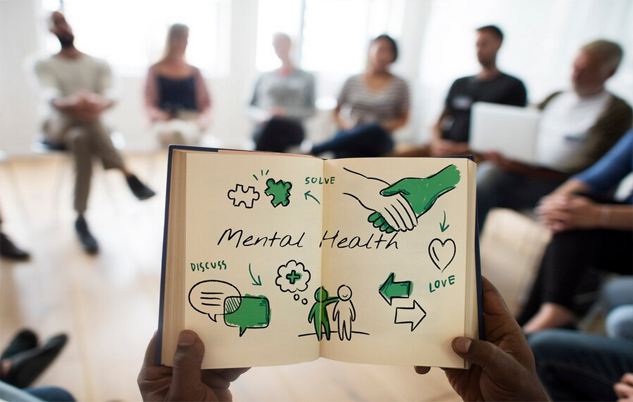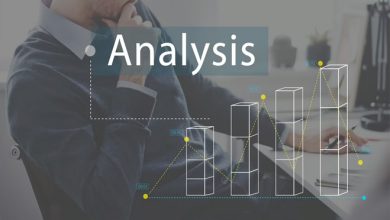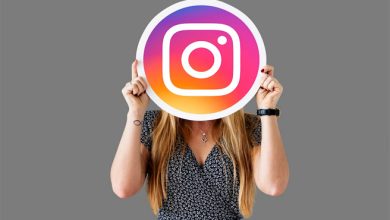
In 2024, the funding for mental health technology has continued to thrive despite the general decline in the market and a slowdown in investments compared to 2020 and 2021 levels. This information comes from the American Psychological Association’s report. However, not all tech companies should consider pursuing this path. Customers require a technology partner with expertise in the mental healthcare sector who can develop a comprehensive range of product features.
Many users expect services to have essential features like asynchronous or synchronous access and support from a mental health professional through live chat, video, telephone, and more. These features are necessary for users to pay for such services. Developing a mental health app can be challenging, as it requires a holistic approach and specialized expertise that extends beyond technical aspects.
Digital Revolution: Why Has Mental Health Changed and Why Are Mental Health Apps Growing?
There have been notable changes in the financial landscape of the mental health sector. In 2021, mental health companies’ median VC deal size increased from $8 million to $10 million. In addition, the mental health sector is projected to reach $26 billion by 2027.
It comes as no surprise. More and more individuals are turning to alternative solutions due to the shortcomings of traditional systems in meeting their mental health needs. In the current era of AI advancements, Big Tech companies are leading the way in developing creative solutions for mental health issues.
However, it’s worth reflecting on the system’s overall failure, which is evident from the data. According to statistics collected by Forbes, the percentage of U.S. adults receiving mental health treatment increased from 19.2% in 2019 to 21.6% in 2021. It appears that the situation may continue to worsen. Many individuals struggle with severe mental health conditions that greatly impact their daily lives. These conditions include psychotic disorder, bipolar disorder, severe anxiety, and eating disorders. It is concerning to note that suicide is the second leading cause of death for children aged 10 to 14 in the United States. Additionally, depression and anxiety have a significant economic impact, resulting in approximately $1 trillion in lost productivity annually.
The data presents a clear image of a system in decline. Many tech companies strive to close this gap. The effectiveness of mental health tech startups may be a topic of debate, but it is impossible to overlook the wide range of mental health apps available in the industry. The sector offers various options, from popular mental wellness apps like Calm and Headspace to platforms like Cerebral and BetterHelp that focus on more severe conditions.
Why Is It Still Worth Developing a Mental Health App in 2023 And Beyond?
Based on the statistics provided, it is clear that there is a significant demand for mental health services. Is it currently a good time to enter the market? The industry is crowded already, and tackling the main challenge – building social trust – regarding online mental health services is not easy. In addition, the development process can sometimes take time to navigate.
Indeed, the answer is clear: the timing has never been more opportune. What is the reason? No one company dominates the industry, suggesting that there is still potential for exploration, improvement, and research. Additionally, the financial opportunities in the mental health sector are significant, particularly considering the increasing need for creative solutions and services.
We are excited to support the mental health products Cooleaf and Panda by developing new features and handling maintenance processes. In 2023, their growth was skyrocketing, with increased funding and new partnerships. Creating a mental health application can be demanding, but the satisfaction of helping numerous individuals makes it genuinely worthwhile.
Types of Mental Health Applications
Mindfulness and Meditation Apps
Experience a sense of calm and tranquility with our guided meditation sessions, soothing breathing exercises, and enchanting sleep stories.
Examples: Headspace, Calm, Happify
Employee Mental Health Apps
Assist professionals in navigating work challenges and fostering an environment of support and openness.
Examples: Cooleaf, Oliva
Online Therapy Platforms
Offer virtual consultations with licensed therapists, providing text, voice, and video sessions in addition to scheduled appointments.
Examples: BetterHelp, Talkspace, Panda
Self-Guided Therapy Apps
Provide practical techniques, exercises from cognitive behavioral therapy, and tools for tracking mood to effectively manage and enhance mental well-being.
Example: Youper, Talkspace
Mental Health Monitoring Apps
Enable users to easily monitor their mood, symptoms, and triggers over time, offering valuable insights and reports on mental health patterns.
Example: Moodpath, Docobo
Psychoeducation Apps
Provide educational materials about mental health conditions, coping techniques, and crisis management to encourage well-informed self-care.
Example: My3, PTSD Coach
Mental Disorder Apps
Take on diagnosed illnesses such as anxiety, depression, and OCD.
Example: ACT Coach, MindShift CBT.
Another way to categorize is by considering the main objective:
Informational Apps
Provide educational resources about mental health.
Diagnostic Apps
Offer tools for self-assessment.
Treatment Apps
Provide therapeutic exercises or connect users with professionals.
Which Features Should You Include?
Creating an excellent list of must-have features for a particular m-health app can be challenging due to the number and variety of objectives it can address. However, let’s try to generalize a bit.
User-Friendly UI Flows
A mental health app should prioritize a user-friendly UI, including simple login modules to prevent frustration among users. It is essential to consider the delicate and sensitive matters the app addresses. Dealing with mental health problems can lead to a reduced ability to focus and heightened irritability. Therefore, having a user interface that is easy to understand is extremely important for increasing user involvement and enhancing accessibility.
Self-Monitoring Tools
Using self-monitoring tools helps users recognize potentially dangerous situations, develop practical solutions, and establish healthy mental habits. These could include options for monitoring mood patterns, stress levels, sleep, and triggers. For example, users can keep track of their activities, evaluate their moods throughout the day, and analyze how different factors like diet and exercise affect their emotions. An effective tool could help analyze stressful situations that lead to unwanted reactions.
Daily Check-Ups
Journaling is a popular activity recommended by psychiatrists and enjoyed by many for expressing and analyzing emotions and thoughts. It can be made easier with the help of app journals. Users can choose between textual, video, and audio formats. Additionally, they can even draw within the app if they prefer. Regular check-ups, including general and specific questions about disorders, symptoms, or goals, can be recorded to monitor progress and anticipate patient well-being changes. There is also a section for comments to provide additional information.
Integration with Other Devices
Improving mental health monitoring can involve syncing the app with various devices, like sleep-analyzing, emotion recognition applications, step counters, and wearables. It provides precise measurements for analyzing trends and tailoring treatment plans. You can enhance the monitoring-oriented feature by incorporating gamification elements like assessment tests, progress bars, levels, leaderboards, and points.
Connecting with Professionals
Apps that help users find psychiatrists, psychologists, and therapists should have various search options to make it simple for users to find the right specialist for their needs. With video calls and chats, therapists, and patients can communicate securely and effectively through the app.
Online Support Groups and Forums
When creating apps for the community, it’s essential to prioritize user safety and foster an environment where people feel comfortable sharing and seeking advice. By incorporating features such as anonymity options, word filtering, and blocking options, we can create a safe and supportive platform.
We understand that it can be overwhelming, but it could be beneficial considering the fast-paced nature of life and the use of multiple channels, such as different types of mental health apps and features. Understanding mental health is complex, and people may need other types of help and resources. The app provides various features and support options, including self-monitoring, diary entries, and professional consultations via video calls. It ensures that users can easily access the help they need, tailored to their needs and timing. This approach is designed to meet the needs of a wide range of users and adapt to their changing requirements, making it a versatile and long-lasting tool for managing mental health.
Mental Health Development Process – Best Practices
Product Discovery
Having a clear vision for the app is essential when starting the development process. We need to find a way to convert the problems the app wants to solve for the specific target audience into particular product features. Discovering this connection requires deeply comprehending your target audience, including their challenges, financial situation, and cultural characteristics. Several factors will impact the app’s design, content, and monetization strategies.
Collaborating with Specialists
The composition of the development team is influenced by the platforms and technologies chosen for your app, as well as the inclusion of UX experts, project managers, and QA specialists. When developing an m-health app, hiring experts with experience in health-related projects and understanding compliance aspects like GDPR or HIPAA is essential.
Building the MVP
Developing an MVP is essential to ensure the app is programmed to meet user-friendliness and safety standards. Testing is crucial for the development of wellness apps. It covers various aspects such as functionality, usability, interface, compatibility, performance, and security.
Final Words
Mental health apps have become increasingly popular as societies grapple with a growing number of issues and a lack of accessible professional help. This surge is not just a passing trend but a necessary response to the global demand for support. Mental health apps can be a valuable resource for individuals, offering essential tools and resources and connecting them with specialized assistance.
Nevertheless, the increasing popularity of mental health apps presents new obstacles and factors to consider. It is crucial to prioritize user data’s effectiveness, security, and ethical handling while also delivering an excellent user experience and a top-notch UI. Developing an m-health app can be challenging, especially when choosing the right partner. Field experience is becoming increasingly important in ensuring the success of the project.




